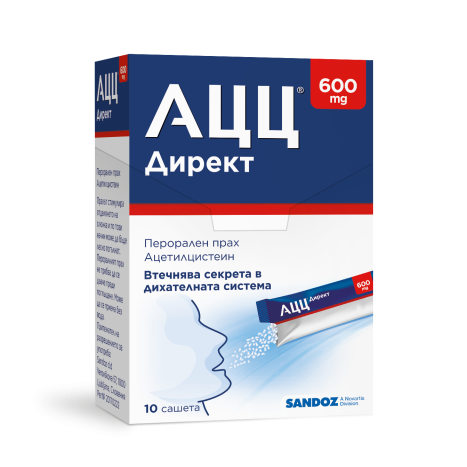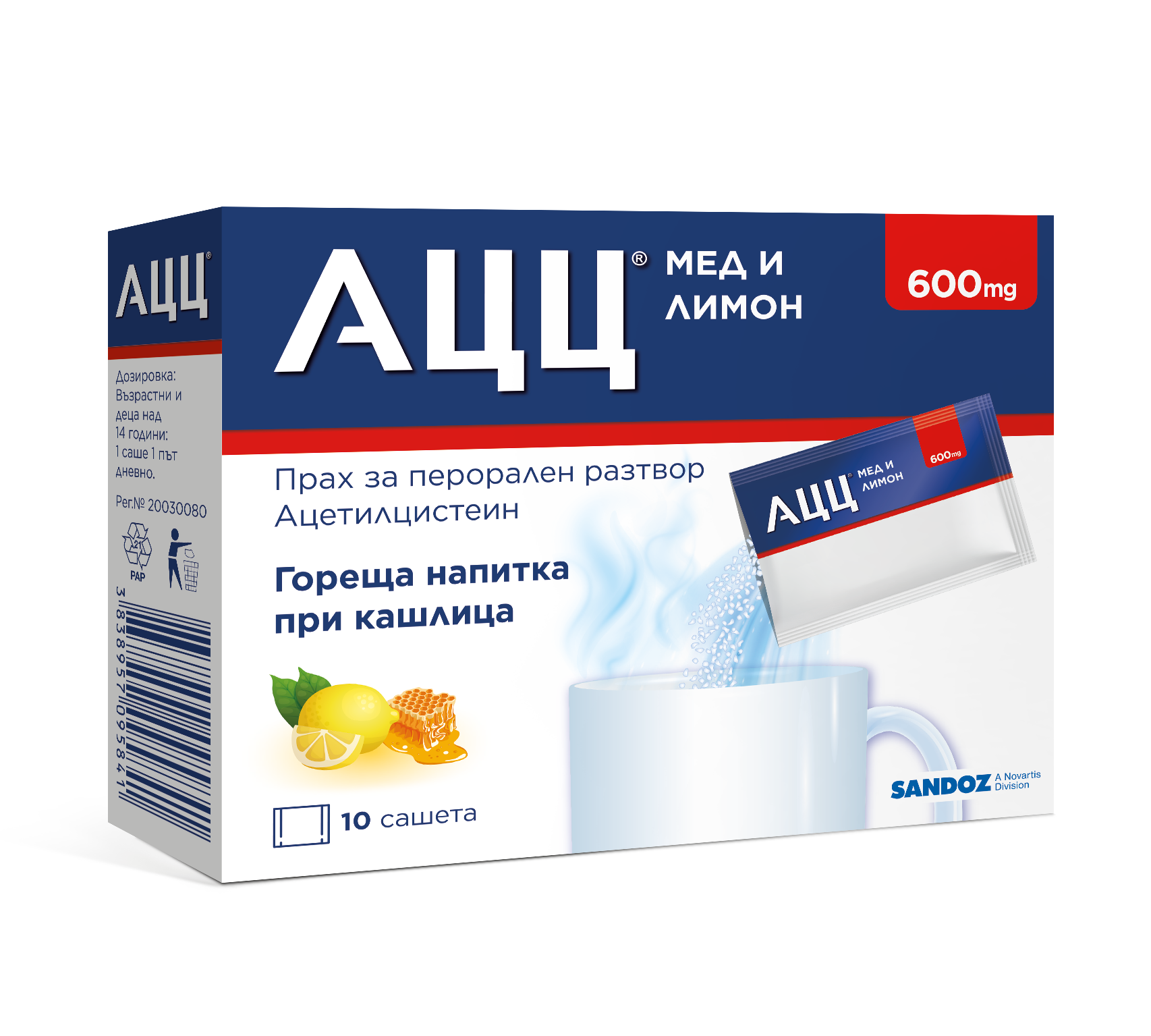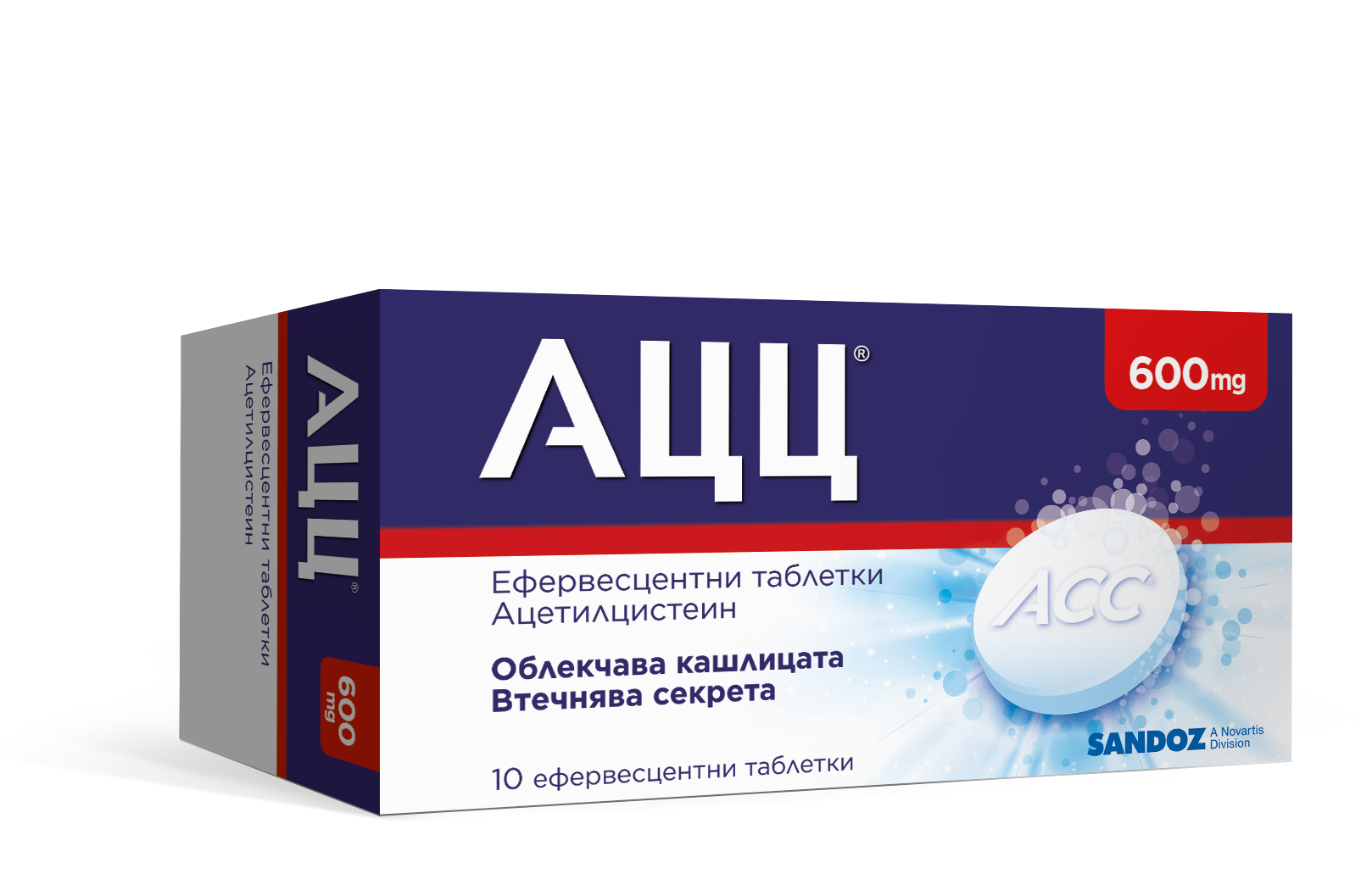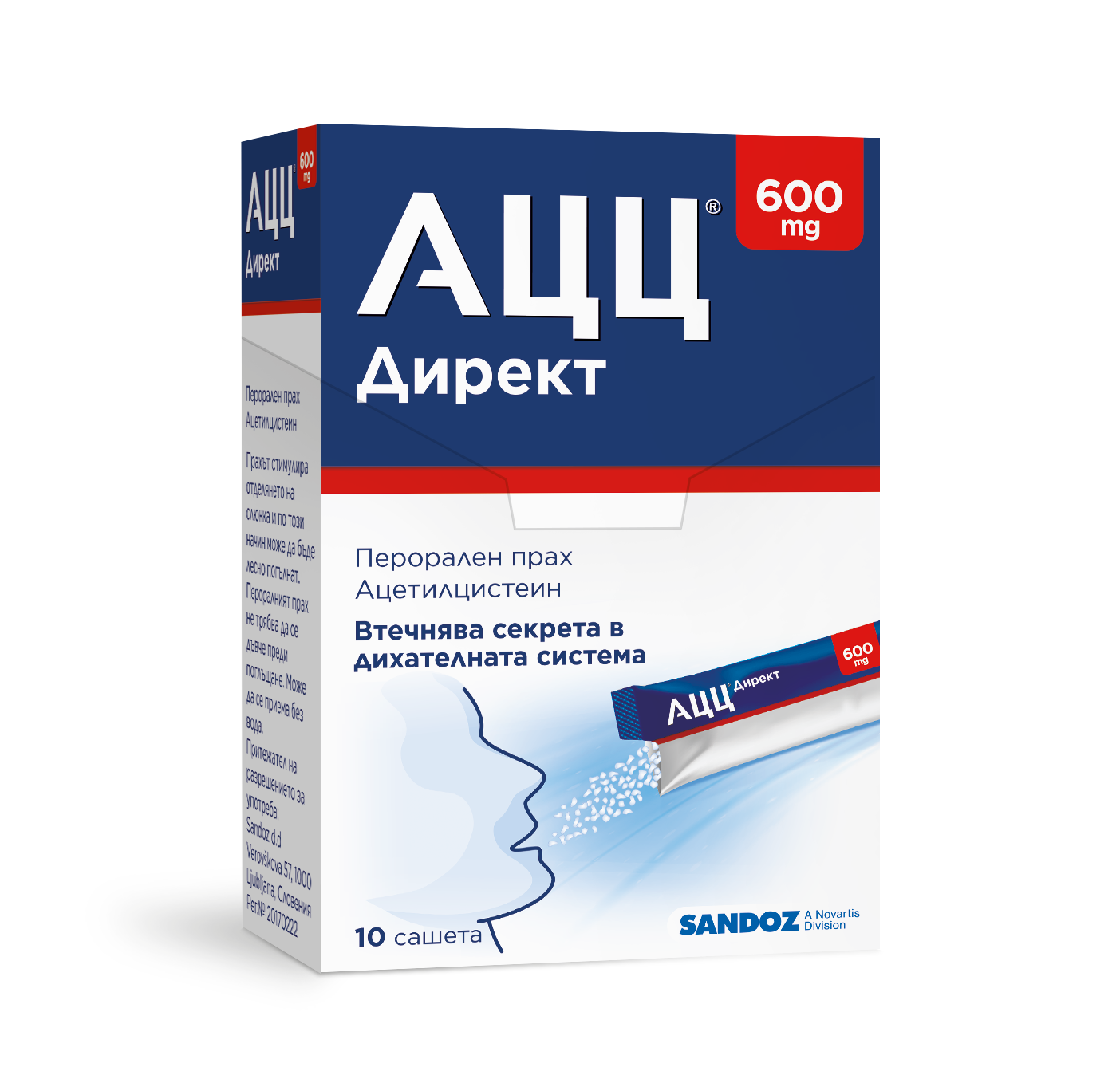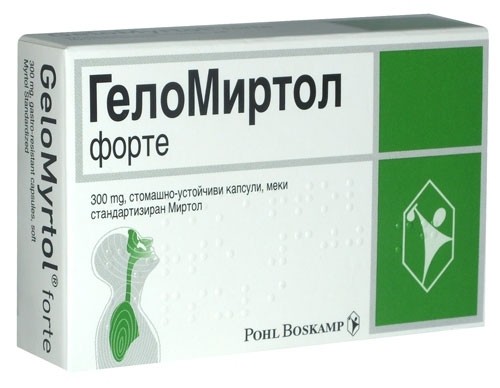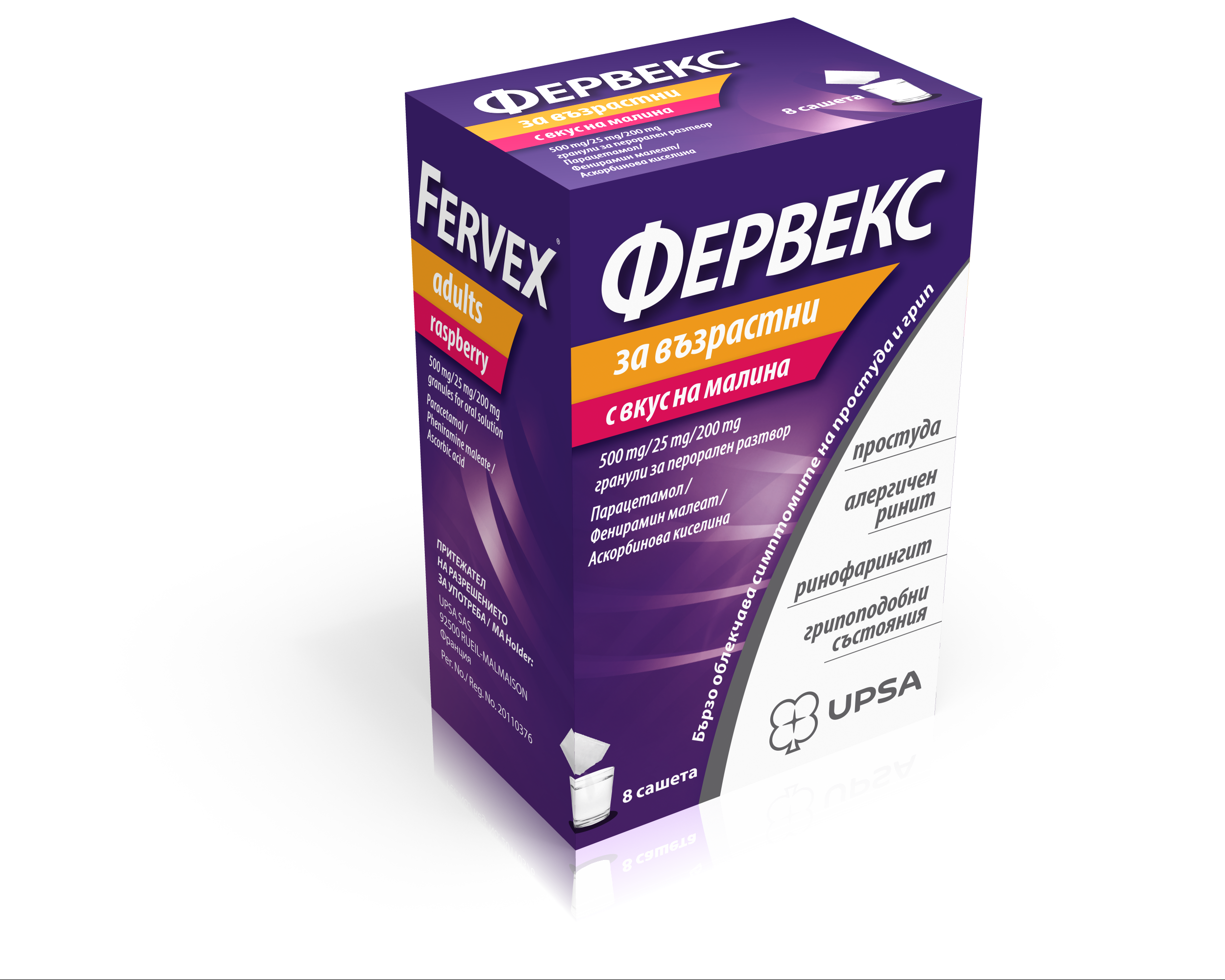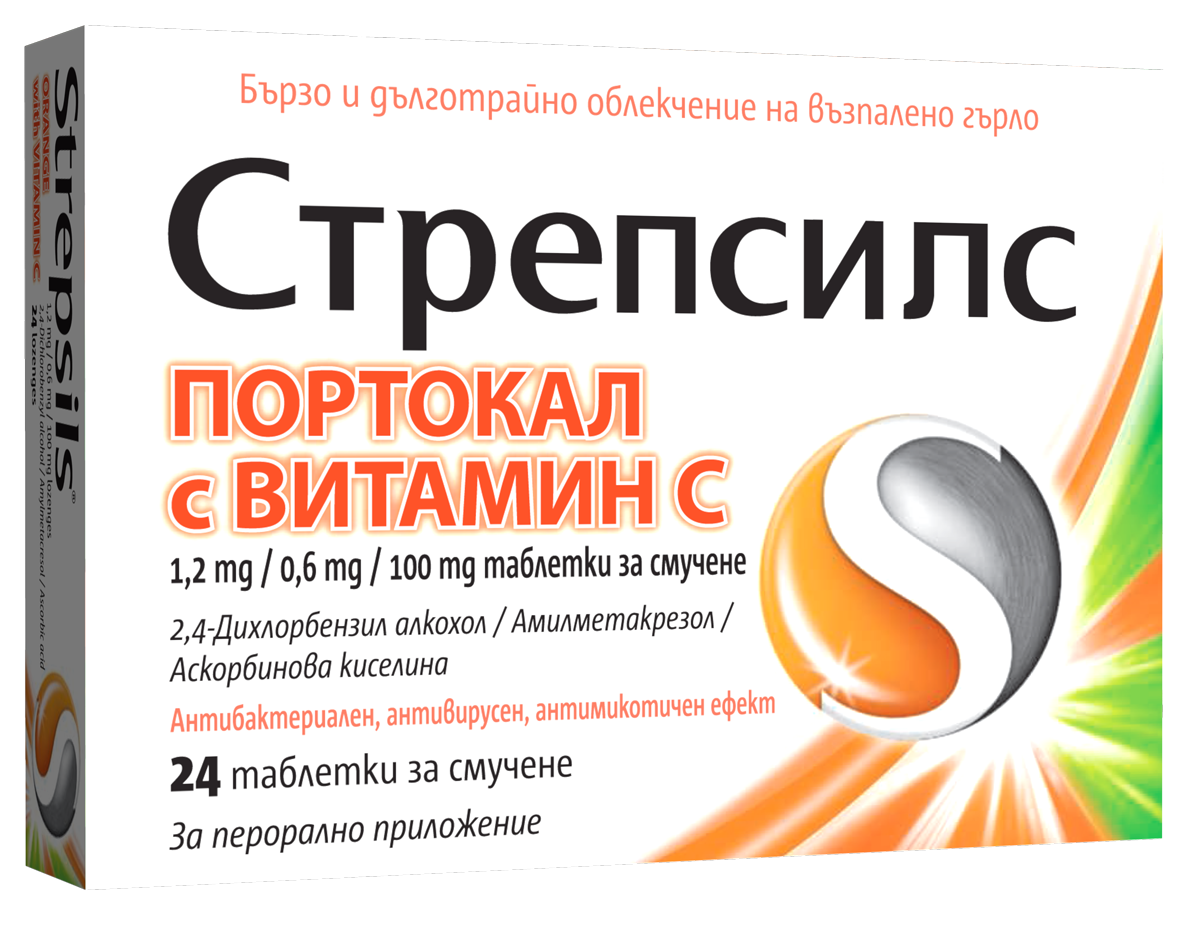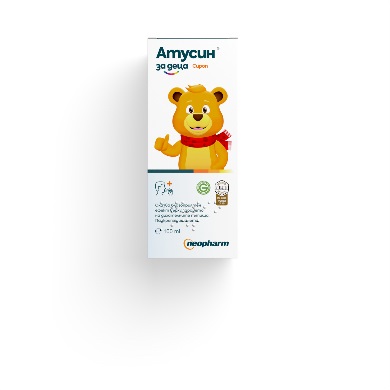ACC DIRECT / ACC Direct 600 mg x 10 sach
ACC DIRECT powder 600 mg. * 10
Leaflet: Information for the user
ACC Direct 600 mg oral powder
ACC Direct 600 mg oral powder
acetylcysteine /acetylcysteine/
Read all of this leaflet carefully before you start taking this medicine because it contains important information for you.
Always take this medicine exactly as described in this leaflet or as your doctor or pharmacist has told you.
• Keep this leaflet. You may need to read it again.
• If you need further information or advice, ask your pharmacist.
• If you get any side effects, tell your doctor or pharmacist. This also includes any possible side effects not described in this leaflet. See point 4.
• ACC Direct should not be taken for more than 14 days without consulting a doctor.
• If after 4-5 days of taking this medicine you do not feel better or your condition worsens, you should seek medical help.
What this leaflet contains:
1. What is ACC Direct and what is it used for?
2. What you need to know before you take ACC Direct
3. How to take ACC Direct
4. Possible side effects
5. How to store ACC Direct
6. Contents of the package and additional information
1. What is ACC Direct and what is it used for?
ACC Direct contains the active substance acetylcysteine and liquefies the thick secretion in the respiratory tract.
ACC Direct is used to liquefy secretions and relieve coughs in diseases of the respiratory system with the presence of thick secretions.
The product can only be used by adults.
2. What should you know before taking ACC Direct?
Do not take ACC Direct
• if you are allergic to acetylcysteine or to any of the other ingredients of this medicine (listed in point 6);
Children under 2 years of age should not use this medicine.
Warnings and precautions
Talk to your doctor or pharmacist before taking ACC Direct if:
• changes in the skin. The occurrence of severe skin reactions, such as Stevens-Johnson syndrome and Lyell syndrome, has been reported very rarely in association with the use of acetylcysteine. If new changes occur on the skin and mucous membranes, medical help should be sought immediately and the use of acetylcysteine should be stopped immediately;
• bronchial asthma;
• ulcers of the stomach or intestines (gastro-intestinal ulcers) in the past or at present;
• hypersensitivity to histamine. Longer duration treatment should be avoided in such patients, as ACC Direct affects histamine metabolism and may cause intolerance symptoms (e.g. headache, runny nose, itching);
• intolerance to fructose, as this product contains sorbitol;
• phenylketonuria, as this product contains a source of phenylalanine.
• inability to expectorate. The use of ACC Direct, especially at the beginning of treatment, can lead to liquefaction and increased formation of bronchial secretions. If you have difficulty in expectorating secretions, your doctor should take appropriate measures.
ACC Direct should not be used in case of liver or kidney failure to avoid additional intake of nitrogen-containing substances.
Children and adolescents
Drugs with mucolytic action may limit the patency of the airways in children under 2 years of age due to the physiological characteristics of the airways in this age group and limited ability to expectorate secretions. Therefore, drugs with mucolytic action should not be used in children under 2 years of age.
ACC Direct is not suitable for children and adolescents. Other suitable dosage forms are available.
Other medicines and ACC Direct
Tell your doctor or pharmacist if you are taking, have recently taken or might take any other medicines. This applies in particular to:
cough relievers (antitussives). The use of ACC Direct in combination with cough relievers can lead to a dangerous accumulation of secretions due to a reduced cough reflex. A careful diagnosis is necessary before the administration of such combined treatment. Be sure to consult your doctor before starting treatment with this combination.
antibiotics. To avoid the influence of antibiotics on the effect of acetylcysteine, they should be taken separately, with an interval of at least 2 hours. This does not apply to medicines whose active substance is cefixime or loracarbef. No interaction was observed with both active substances, which is why they can be taken simultaneously with acetylcysteine.
activated carbon. Activated charcoal can reduce the effect of acetylcysteine.
glyceryl trinitrate. Increased vasodilatation and a decreased effect on platelets have been reported with the concomitant use of glyceryl trinitrate and acetylcysteine.
Your doctor will check your blood pressure for a possible drop, which could be serious and a sign of it would be a headache.
Laboratory studies
Tell your doctor that you are taking ACC Direct if you are due to have any of the following tests, as it may affect the results of:
• salicylates: medicines to relieve pain, inflammation or rheumatism;
• ketone bodies in urine.
Pregnancy and breastfeeding
If you are pregnant or breast-feeding, think you may be pregnant or are planning to become pregnant, ask your doctor or pharmacist for advice before using this medicine.
• Pregnancy
There is insufficient data on the use of acetylcysteine in pregnant women, therefore you should use ACC Direct during pregnancy only if your doctor considers it absolutely necessary.
• Breastfeeding
There is no information on whether acetylcysteine passes into breast milk. Therefore, you should use ACC Direct during breastfeeding only if your doctor considers it absolutely necessary.
Driving and using machines
There is no evidence that acetylcysteine affects the ability to drive and use machines, or it has a negligible effect.
ACC Direct contains sorbitol and aspartame
If your doctor has told you that you have an intolerance to some types of sugars, consult your doctor before taking this medicinal product, as it contains sorbitol.
The medicinal product contains a source of phenylalanine (aspartame). It can be harmful to people with phenylketonuria.
3. How to take ACC Direct?
Always take this medicine exactly as described in the leaflet or as your doctor or pharmacist has told you. If you are not sure, ask your doctor or pharmacist.
The recommended dose is 1 sachet daily, unless your doctor has prescribed another dose.
Method of application
The powder for oral administration from one sachet of ACC Direct should be poured directly onto the tongue. It stimulates the secretion of saliva and this makes it easier to swallow.
Please note that the powder should not be chewed before swallowing.
Elderly and debilitated patients
It is preferable for patients with a reduced cough reflex (elderly patients and patients with fatigue) to take the powder in the morning.
Duration of use
• ACC Direct should not be taken for more than 14 days without consulting a doctor.
• If your symptoms worsen or do not improve after 4-5 days, you should consult a doctor.
If you have taken more than the required dose of ACC Direct
In case of overdose, stomach and intestinal irritation may occur, eg abdominal pain, nausea, vomiting, diarrhoea.
So far, no adverse reactions or signs of poisoning have been reported, even in severe overdoses. However, if you suspect an overdose with ACC Direct, you should inform your doctor.
If you have missed taking ACC Direct
Do not take a double dose to make up for a missed dose. Just take your next dose at the usual time.
If you have any further questions related to the use of this medicine, ask your doctor or pharmacist.
4. Possible side effects
Like all medicines, this medicine can cause side effects, although not everybody gets them.
Stop taking ACC Direct and contact your doctor immediately if signs of an allergic or serious skin reaction occur.
Uncommon (may affect up to 1 in 100 people):
• allergic reactions (itching and formation of hives (urticaria), severe subcutaneous swelling (angioedema) and skin rash));
• accelerated heart rate (tachycardia);
• lowering of blood pressure (hypotension);
• headache;
• noise in the ears (tinnitus);
• stomatitis, abdominal pain, nausea, vomiting and diarrhea;
• increased temperature.
Rare (may affect up to 1 in 1,000 people):
• shortness of breath, bronchospasm - especially in patients with an over-reactive bronchial system in the case of bronchial asthma;
• indigestion (dyspepsia).
Very rare (may affect up to 1 in 10,000 people):
• severe allergic reactions, which can develop including shock;
• serious skin reactions, for example Stevens-Johnson syndrome and Lyell's syndrome;
• occurrence of bleeding (hemorrhage), partly in connection with hypersensitivity reactions.
Not known (frequency cannot be estimated from the available data):
• accumulation of water in the face (facial edema).
At the first signs of a hypersensitivity reaction (see above), ACC Direct should not be taken again. In this case, a doctor's consultation is necessary.
Reporting adverse reactions
If you get any side effects, tell your doctor or pharmacist. This includes all possible side effects not described in this leaflet. You can also report side effects directly through the national reporting system to:
The Medicines Executive Agency,
Damyan Gruev St. No. 8,
1303 Sofia,
phone: +35928903417,
website: www.bda.bg.
By reporting side effects, you can contribute to getting more information about the safety of this medicine.
5. How to store ACC Direct?
Keep out of the reach of children.
Do not use this medicine after the expiry date which is stated on the sachet / carton after EXP. The expiration date corresponds to the last day of the specified month.
To be stored below 25°C.
Do not dispose of medicines down the drain or in the household waste container. Ask your pharmacist how to dispose of medicines you no longer use. These measures will help protect the environment.
6. Contents of the package and additional information
What does ACC Direct contain?
- The active substance is: acetylcysteine. Each sachet contains 600 mg of acetylcysteine.
- The other ingredients are: glyceryl tripalmitate, polysorbate 65, sorbitol (E420), xylitol, anhydrous citric acid, monosodium citrate, magnesium citrate, carmellose sodium, aspartame (E951), blackberry flavor "B" (contains vanillin; maltodextrin; gluconolactone; sorbitol; colloidal anhydrous; mannitol (E421); magnesium stearate.
What does ACC Direct look like and what does the package contain?
ACC Direct is a white to slightly yellowish powder, with easily disintegrating agglomerates, if any, with a blackberry odor that may be slightly sulphurous.
ACC Direct is packed in a sachet.
Each sachet contains 1.6 g of powder.
Types of packaging: 8, 10, 14, 20, 30, 60, 90 sachets.
Not all types of packaging can be marketed.
Marketing Authorization Holder and Manufacturer
Marketing Authorization Holder:
Sandoz dd, Slovenia
Manufacturers
Hermes Arzneimittel GmbH, Austria;
Salutas Pharma GmbH, Germany.


